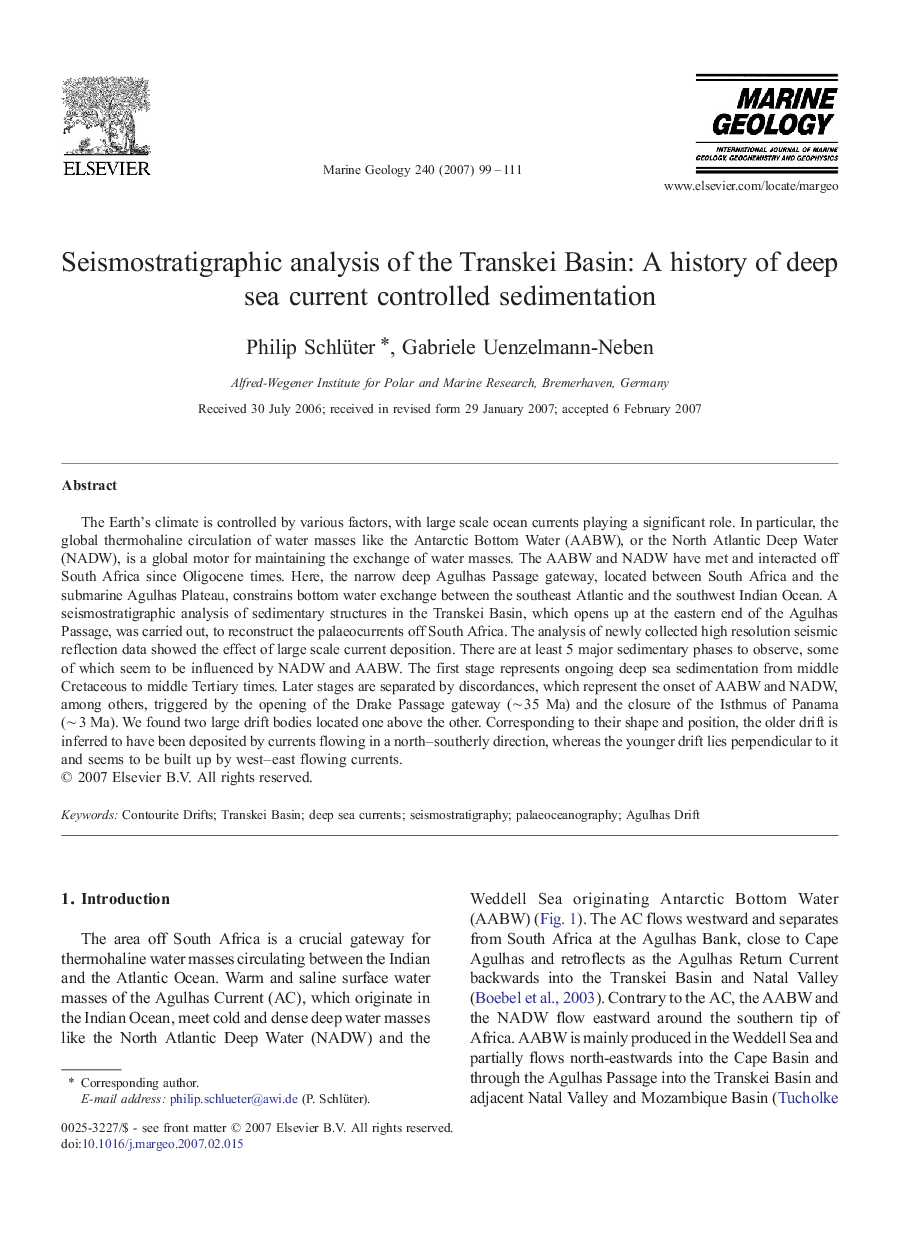| Article ID | Journal | Published Year | Pages | File Type |
|---|---|---|---|---|
| 4719417 | Marine Geology | 2007 | 13 Pages |
The Earth's climate is controlled by various factors, with large scale ocean currents playing a significant role. In particular, the global thermohaline circulation of water masses like the Antarctic Bottom Water (AABW), or the North Atlantic Deep Water (NADW), is a global motor for maintaining the exchange of water masses. The AABW and NADW have met and interacted off South Africa since Oligocene times. Here, the narrow deep Agulhas Passage gateway, located between South Africa and the submarine Agulhas Plateau, constrains bottom water exchange between the southeast Atlantic and the southwest Indian Ocean. A seismostratigraphic analysis of sedimentary structures in the Transkei Basin, which opens up at the eastern end of the Agulhas Passage, was carried out, to reconstruct the palaeocurrents off South Africa. The analysis of newly collected high resolution seismic reflection data showed the effect of large scale current deposition. There are at least 5 major sedimentary phases to observe, some of which seem to be influenced by NADW and AABW. The first stage represents ongoing deep sea sedimentation from middle Cretaceous to middle Tertiary times. Later stages are separated by discordances, which represent the onset of AABW and NADW, among others, triggered by the opening of the Drake Passage gateway (∼ 35 Ma) and the closure of the Isthmus of Panama (∼ 3 Ma). We found two large drift bodies located one above the other. Corresponding to their shape and position, the older drift is inferred to have been deposited by currents flowing in a north–southerly direction, whereas the younger drift lies perpendicular to it and seems to be built up by west–east flowing currents.
